Entry Database : PDB / ID : 3kujTitle Crystal structure of C-terminal domain of PABPC1 in complex with binding region of eRF3a GSPT1 protein Polyadenylate-binding protein 1 Keywords / / / / / / / / / / Function / homology Function Domain/homology Component
/ / / / / / / / / / / / / / / / / / / / / / / / / / / / / / / / / / / / / / / / / / / / / / / / / / / / / / / / / / / / / / / / / / / / / / / / / / / / / / / / / / / / / / / / / / / / / / / / / / / / / / / / Biological species Homo sapiens (human)Method / / / Resolution : 1.4 Å Authors Kozlov, G. / Gehring, K. Journal : Plos One / Year : 2010Title : Molecular basis of eRF3 recognition by the MLLE domain of poly(A)-binding protein.Authors : Kozlov, G. / Gehring, K. History Deposition Nov 27, 2009 Deposition site / Processing site Revision 1.0 May 12, 2010 Provider / Type Revision 1.1 Jul 13, 2011 Group / Version format complianceRevision 1.2 Sep 6, 2023 Group Data collection / Database references ... Data collection / Database references / Derived calculations / Refinement description Category chem_comp_atom / chem_comp_bond ... chem_comp_atom / chem_comp_bond / database_2 / pdbx_initial_refinement_model / struct_ref_seq_dif / struct_site Item _database_2.pdbx_DOI / _database_2.pdbx_database_accession ... _database_2.pdbx_DOI / _database_2.pdbx_database_accession / _struct_ref_seq_dif.details / _struct_site.pdbx_auth_asym_id / _struct_site.pdbx_auth_comp_id / _struct_site.pdbx_auth_seq_id
Show all Show less
 Yorodumi
Yorodumi Open data
Open data Basic information
Basic information Components
Components Keywords
Keywords Function and homology information
Function and homology information Homo sapiens (human)
Homo sapiens (human) X-RAY DIFFRACTION /
X-RAY DIFFRACTION /  SYNCHROTRON /
SYNCHROTRON /  MOLECULAR REPLACEMENT / Resolution: 1.4 Å
MOLECULAR REPLACEMENT / Resolution: 1.4 Å  Authors
Authors Citation
Citation Journal: Plos One / Year: 2010
Journal: Plos One / Year: 2010 Structure visualization
Structure visualization Molmil
Molmil Jmol/JSmol
Jmol/JSmol Downloads & links
Downloads & links Download
Download 3kuj.cif.gz
3kuj.cif.gz PDBx/mmCIF format
PDBx/mmCIF format pdb3kuj.ent.gz
pdb3kuj.ent.gz PDB format
PDB format 3kuj.json.gz
3kuj.json.gz PDBx/mmJSON format
PDBx/mmJSON format Other downloads
Other downloads 3kuj_validation.pdf.gz
3kuj_validation.pdf.gz wwPDB validaton report
wwPDB validaton report 3kuj_full_validation.pdf.gz
3kuj_full_validation.pdf.gz 3kuj_validation.xml.gz
3kuj_validation.xml.gz 3kuj_validation.cif.gz
3kuj_validation.cif.gz https://data.pdbj.org/pub/pdb/validation_reports/ku/3kuj
https://data.pdbj.org/pub/pdb/validation_reports/ku/3kuj ftp://data.pdbj.org/pub/pdb/validation_reports/ku/3kuj
ftp://data.pdbj.org/pub/pdb/validation_reports/ku/3kuj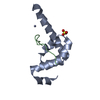

 Links
Links Assembly
Assembly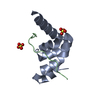
 Components
Components Homo sapiens (human) / Gene: PABPC1, PAB1, PABP1, PABPC2 / Plasmid: pGEX-6P-1 / Production host:
Homo sapiens (human) / Gene: PABPC1, PAB1, PABP1, PABPC2 / Plasmid: pGEX-6P-1 / Production host: 
 Homo sapiens (human) / References: UniProt: Q96GF2, UniProt: Q8IYD1*PLUS
Homo sapiens (human) / References: UniProt: Q96GF2, UniProt: Q8IYD1*PLUS X-RAY DIFFRACTION / Number of used crystals: 1
X-RAY DIFFRACTION / Number of used crystals: 1  Sample preparation
Sample preparation SYNCHROTRON / Site:
SYNCHROTRON / Site:  CHESS
CHESS  / Beamline: F2 / Wavelength: 0.978 Å
/ Beamline: F2 / Wavelength: 0.978 Å Processing
Processing MOLECULAR REPLACEMENT
MOLECULAR REPLACEMENT Movie
Movie Controller
Controller


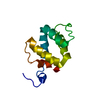
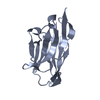

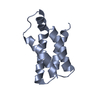
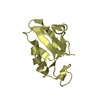
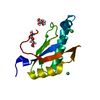



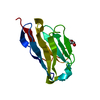
 PDBj
PDBj












